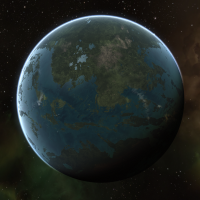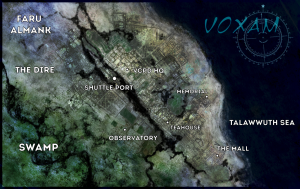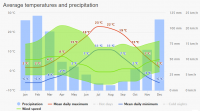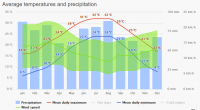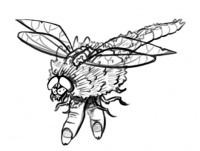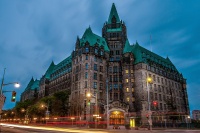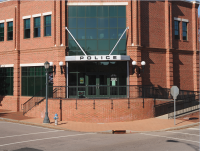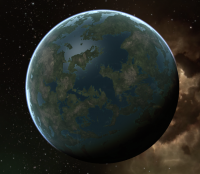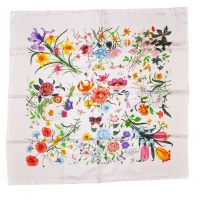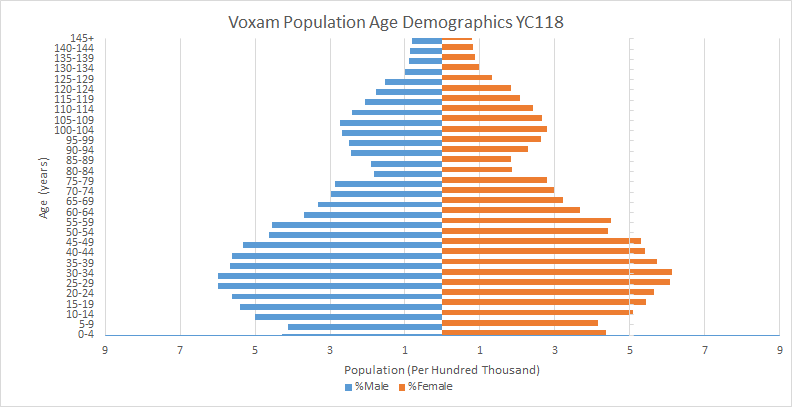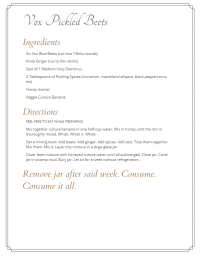Aetree IV
Aetree IV is the host to one of the less notable member-states of the Gallente Federation. It is located in the low security portion of Sinq Laison. Aetree IV's largest population centre is the Delta city of Voxam, and many use the planet name and the city name interchangeably, though this is not strictly accurate. Aetree IV is a homeworld, not a colony. Its native population goes by the moniker "Vox."
Geography, Climate, Biome
The city of Voxam is divided in two between swamp and marsh, with small sections of mire dotting between the two; the North, Northeast, Centre, and Northwest portions of Voxam are overwhelmingly marshlands, whereas the Southwest and South portion is swamp. A river bisects the city at an angle, going from Northwest to South. An ocean borders the Eastern edge of the city.
The marshlands tend to be chilly, with sparse bushes, much standing water, bio-luminescent algae, and the occasional megawillow. It rains frequently and fog is common. The temperature varies widely during the year; the wind is strong, and tends to stay at 8 meters per second; and the nights tend to be below freezing. The water depth varies from 39 to 182 cm in the wet months. The marshes support low-growing plants like grasses and sedge. Many inhabitants fish in the waters to supplement their diet. Turtles are not protected by local legislation, but few residents capture them or consume them. Birds, frogs, opossums, deer, and muskrats who run wild are not so lucky.
The swamplands tend to be hot, humid, and buggy. Here many trees rise from tepid pools and moss and glowing algae cover standing water. While glowing algae is a unifying commonality between all of Voxam districts, it's especially thick in the swamp districts. At night, the light pollution in this district from the algae (referred to as camak) is such that it obscures more distant stars in the sky. Camak doubles as Voxam's main source of sustenance: while it is considered bland, it holds almost all the nutrients an average adult needs in almost perfect proportions, so many native recipes include it in some way or another. Algae "flour" is a popular ingredient. Camak is not found as abundantly in other climates and biomes on Aetree IV, if at all.
The wilderness beyond the Voxam city limits is uncharted and unpopulated. Before the Gallente-Caldari War, there were small settlements all over the planet, though none large enough to qualify as a town or city. These settlements vanished during the information blackout period. Unhappy tourists have reported odd sightings while on the edge of Outercity.
The Undercity
The city of Voxam, as it is located on marsh and swamplands, has a history of sinking into the mud. There is no confirmed date for when this phenomenon started, but no architecture has ever been built on proper foundation, so it is possible that the city has been sinking since its first settlers. Not much is known about the city under the city, as it is dangerous to navigate and prone to collapsing, and it is known to be abandoned for this reason. Inspection of higher levels suggests that structures have been continually built upon as they have sunk into the mud, though Outercity academics engage in active debate regarding that possibility or the possibility that topside Innercity huts are only the tips of massive preexisting superstructures. Estimations for the Undercity depth start at 1 kilometer.
Governance
Information about Voxam's governmental structure is hard to obtain, as all but one of Voxam's public organs are on strictly paper-based recording systems. The best public Federal assessment suggests that Voxam is a formal combination of ochlocracy, noocracy, and Xeer, though exactly what is what and which is which is unclear. The age of majority in Voxam is 15.
Federal analysts recognise three distinct powers: the mayoral administration, the city council, and the city police.
Voxam Mayoral Administration
The title of mayor is a misnomer and is often a result of poor translation: the title in taradiddle is Wasit, which translates more accurately into arbiter. The position of mayor holds no formal power. The singular responsibility of the mayor is to arbitrate between the city council and the city police, ostensibly on behalf of the masses. The mayor has been the city's chief diplomat for interstellar relations, though this power is not codified in law. Federal public records are unclear as to how a mayor is selected, nor how and when one is dispensed, but the records do note that the amount of mayors who have died to unnatural causes is greatly elevated from public officials in other comparable roles in different member-states.
After the death of the last mayor, the current "acting" mayor is Adley Kilby.
Voxam City Council
The Voxam City Council, as per Federal public assessments, is most closely understood as a noocracy. When a city council member dies, the city is called to a vote; Innercity Voxam has only once been recorded by the Federation at being below 100% turnout for these votes. An elected council member serves a life term, and though there is no nomination process - a campaign is technically open for all, and all candidates are "write ins" - a super majority of Innercity voters select a single candidate. This candidate usually holds some fame in Outercity circles for creative achievements.
The Voxam City Council draft and vote on civil and criminal law. They make decisions for publicly-owned responsibilities, such as electricity, water, education, GalNet access, housing, and health, and their day-to-day responsibilities include collaboration with the sitting mayor to make arrangements with the Federal Administration in areas that share joint legislation with the Federation.
The current City Council consists of Vivaan Reyansh, Aiden Hardcastle, Anwar Chamberlin, Mason, Heikki Joakin, Doctor Fadl Badem, Professor Feresh Leon, Aleida Cartwright, Leofrick Lunadream, Dedicate Ukhur, Fundor, and Arthur Farlight.
Voxam City Police
The Voxam City Police, led by the Chief of Police, ostensibly enforce the law created by the Voxam City Council. However, the police as a collective force have the legally enshrined power rather than informal power typical to law enforcement in other governments to pick and choose what laws will or won't be enforced. This gives them a polycentric legal domain shared by the city council and can result in feuds that require mayoral intervention to settle.
As the city of Voxam adopts a more inquisitorial justice system rather than an adversarial one, the powers of sentencing and punishment also fall under the domain of the Voxam City Police. Seniority on the force does not dictate promotions nor job placement, but it is respected informally as a metric of good judgement. Sentencing tends to be more compensatory than punitive and largely determined by precedence. As a result, neither Voxam nor the whole of Aetree IV has a prison. The Federation notes that this is likely helped by the fact that Voxam enjoys incredibly lower than expected, than projected, crime rates for a Delta city.
The Voxam City Police is divided into six major divisions, all headed by a Captain: the Liaisons division, the Patrol division, the Investigative division, the Administrative division, the Forensics division, and Internal Affairs. Work relationships intra-division, though not inter-division, tend to be adversarial. Internal Affairs, in contrast to its role in corporations or other police departments within the Federation, tends to enjoy greater respect, latitude, and overall popularity compared to other divisions.
The Voxam City Police is by far the largest government institution in Voxam, as well as the most populated and the most well funded. Employee records estimate that employees of the department constitute 3% of the total Voxam City population.
The current Chief of Police is Valerie Valentini.
Federation Relations
Voxam has been a member-state of the Federation since AD 23156, a year after the Gallente-Caldari war had begun. It was a late addition compared to its neighbours on Aetree VIII who were member states decades before. Negotiations to join had been ongoing for fifty years, after influential powers belonging to both Aetree IV and Esmes III had witnessed the improvements in Aetree VIII during their upliftment. Voxam Mayor Allie Taylor was recorded saying, "What's the catch?" to the Esmes III representative from Semes, Esmes III's predominant nation-state, as an aside during the meetings.
The negotiations were hastened at the advent of the war in light of panics inside of major population centres in response to the military occupation. Even so, the State's military occupation of Sinq Laison prevented any Federal intervention. The Aetree and Esmes systems had an information blackout during this period. When the Federation reclaimed the region, the records note that the State's scorched earth campaign and associated raiding parties must have transformed the faces of the planets of these systems, as many population centres were outright missing, the remaining populations were severely diminished, and even some biomes were unrecognisable from their pre-occupation years. Aetree VIII remained as close to its pre-occupation state as possible, and Federal records note that much of the technology gained during their upliftment process apparently helped preserve and protect; Aetree IV and Esmes III did not enjoy such advantages. Both systems and their associated member states welcomed the Federation, and muted celebrations were held. The exact day the Federation retook Aetree is a member-state-wide holiday: February 17.
To this day, while Aetree IV has minimal power and influence on the Federal stage, the local government and the populace appears to feel warmly towards the Federation, and have always cooperated with Federal wishes and requests.
Esmes III Relations
One of the first benefits the negotations with the Federation netted for Voxam was a spaceport directly in its centre. In the early pre-military-occupation days, the areas around this spaceport were bustling marketplaces. Early traders came from Esmes III, then early immigrants, then whole populations as Esmes III and Aetree IV interbred and intermingled in this central hub. The first diplomatic overtures between Esmes III and Aetree IV were between a Voxam mayor and a Semes priest, who were representing their respective peoples during the Federation negotiations. The pair fell in love, and spent the rest of their lives encouraging an intimate relationship between their peoples. During their services, Federal diplomats and negotiators noted that Semes and Voxam were deliberately altering their governments to match one another. Another Aetree IV holiday on July 22 celebrates the alliance between the two.
After the State military occupation and communications blackout with the Federation, Semes and Voxam appeared to be identical, and lost all of their obviously unique defining characteristics. Culturally, architecturally, governmentally: this led Federal officials at the time to redo all surveys in the area and cross-reference them with old records. The close Esmes III and Aetree IV relationship continued with no disruptions until the Sansha incursion in YC114 which left Esmes III a ghost planet.
Economy
The Federation's records indicate that the primary industries of Voxam are food and mining. The major food industries are water testing, purification, and distribution infrastructure. Primary food production is in tea, fishing, insects, orchards, and livestock. There are few farms on the whole of Aetree IV, and the ones established by immigrants don't tend to last long before shutting down or disappearing. Mining is limited to the collection, mining, and processing of bog iron and gold, then to the quarrying of stone. Most populations the Federation would consider lower class find work in these areas.
Much fishing, orchards, livestock, mining, and quarrying happens outside of city limits. The mortality rates of these employments is greatly elevated compared to these jobs not just inside city limits, but also for these professions elsewhere in the Federation. Populations that find employment beyond city limits exclusively commute to these locations. Even employers do not live near-site, nor on-site, instead choosing to live within city limits. These populations tend to charter boats to go upriver, downriver, or along swamp routes to get to work. Local unions do not bring this up as an issue during contract negotiations with employers. The unions in these industries are the strongest in the city.
A local university official claims that Voxam historically had a source of copper, but that it dried up 270 years ago.
Most of Voxam's power infrastructure comes in the form of solar power and wind power built into the Talawwuth coast and into the sea, though there are also underwater turbines in the Talawwuth and the rivers. Outercity enjoys plenty of electricity, according to Federal assessments, and the few Innercity structures Federal census takers and researchers have managed to enter have not suffered a lack, either, though electricity is often accompanied by less advanced methods; some Innercity homes may enjoy lights with lightbulbs, but will still employ candles at times, whereas some may have washers and dryers, but will still choose to wash clothes by hand. Federal agents remain unclear as to why.
Technology and Upliftment
Federal efforts to uplift Voxam have been largely unsuccessful. Hospitals in Innercity have closed every time after being plagued with low patient counts and high patient mistakes. Public transit efforts have failed; the muddy, unstable nature of the ground has sunk most efforts to create non-cobblestone roads or metros, and higher technology vehicles have found themselves stripped for parts or left unused, without maintenance for so long that they crumble. Outercity boasts the most recent failing effort to create and maintain a public transit system: an underfunded busing system will take a citizen around the Outercity circle, North to South, but the ride is reported to be bumpy and slow. For the moment, a ride is free. The primary forms of transportation in the city are by horse, by foot, and by bus.
Inversely, Egonics Inc. marketing campaigns in Voxam have faced the most resistance from Outercity. Billboards in Outercity were egged, posters were torn down, and vendors were boycotted en mass during a YC114 ad campaign. Egonics Inc. reported massive losses and cancelled their outreach efforts.
Voxam City governmental institutions have often lead Voxam in the adoption of new technology; the Voxam City Police is the most modern of all these institutions, boasting a direct deposit payment system, a force of speeders, and a passable forensics department. Employees of the police department are trained to use computers and information technologies, even if the training will surpass what the department has available. The Voxam City Council has hired off-world contractors to install a helipad system.
Currency
The official Voxam Planetary Credit is three centimeter by three centimeter embroidered cloth squares. These cloths are made from clothing-grade material, and so they are prone to staining and degradation. This has led Outercity residents to go on record criticising the local Voxam government for poorly-conceived frivolousness and wasting taxpayer money. Innercity has no recorded criticism, though this may be because, as the Federation has noted, Innercity does not tend to use legal tender for exchanges. The basic one Planetary Credit note, pictured, is a linen square. The five Credit is a polyester square. The twenty Credit is viscose. The fifty Credit is velvet, and the hundred Credit is silk. The production of the Credit is ongoing, as turnover is far higher than currencies made from more sustainable, maintainable materials.
Demographics
The whole of Voxam city ostensibly, according to Federal records, has a population of 20 million people. It has a surface area of 58,977.69 square kilometers, and a population density of 340 people per square kilometer.
Innercity Voxam is roughly 56,250 square kilometers with an ostensible population of 15.9 million, according to Federal records, at a population density of 320 people per square kilometer. Innercity's radius is 133.85 kilometers, whereas the whole of the city's radius is 137.05 kilometers. Outercity's area is roughly 2,727.69 square kilometers, with a population of 4.1 million, and a population density of roughly 1,500 people per square kilometer. The circular Outercity "band," or "wall," is only a little more than 3 kilometers from its border with Innercity to termination into the Aetree IV wilderness.
Put into perspective, Voxam's Innercity area is 21 to 1 of Outercity's area. There are nearly 4 times more people in the Innercity than the Outercity, but Outercity is almost 5 times more dense than Innercity.
The Federal census records that all Innercity occupants identify as Vox. Outercity consists of people who identify 30% ethnic Gallente, 30% Caldari, 10.7% Intaki, 11.3% Mannar, 8.6% Minmatar, 4% True Amarr, 2.2% Vox, and 3.2% Jin-Mei. Other identities do not consist a single percentage point. Women appear to be 48% of the population according to the Federal census; men are 52%.
The Federal census notes that large portions of Outercity "migrate" Innercity, as families abandon their previous identities and adopt the Vox identity. This decision is accompanied by a literal move to Innercity. There is negligible amounts of migration the opposite way; the Vox do not tend to switch identities. Vox who switch identities tend to number in the double digits for five year spans, and those who switch identities this way always move to Outercity.
Religion
The Outercity identities tend to stay true to the religion of their respective identity. The ethnic Gallente favour the Lunaries; the Caldari follow the Way; the Intaki participate in Ida; and so on. Outercity scholars observe that the religions of the Vox are many and tempestuous. They suggest that the Vox create, maintain, fight, and destroy cults in place of "higher technology" forms of entertainment and recreation. This has, at times, generated friction between local populations and other populations, as well as with formalised power institutions.
The Vox spiritually believe that the body and soul have no distinction. As a matter of culture, the Federation has seen the Vox treat the body and soul as being the same. While Federal records don't go into much detail about this habit of thought itself, it does go into great detail about the trouble this has caused various upliftment efforts in the medical area. The Vox have appreciated and accepted Federal medicine, but the practices do not take root, as this cultural thought prevents a deeper, nuanced understanding of Federation medical approaches. Hospitals built in Innercity inevitably shut down. Hospitals in Outercity that treat Vox populations report constant problems with medication; the Vox will do things like take half doses, not take pills at all, take them all at once, or take their prescriptions but stop when they start feeling better. Ibuprofen and Paracetamol are used in Innercity Voxam. However, all sugar coated versions are banned across the entire planet.
Unlike other cultures that hold similar beliefs, the Vox are not hostile to the concept and practice of genetic engineering, body modifications, or augmentations. Their interpretation of the body/soul sees both as more malleable and less inviolable, and this has resulted in an honouring of certain medicine-related professions, such as the crafting of prosthesis. However, people with physical deformities, such as poor eyesight or missing limbs, bear a stigma unless they seek correction. Medical professionals from the Federation in Outercity have reported much frustration and impotence in soliciting these individuals to come out of concealment and receive treatment.
Education
Culture
Much of the Voxam culture stems in the dynamic between various "fannans," who are great artists. The Vox seem to believe that "information," be it secrets, training, fiction or various pieces of art, is a finite resource subject to the tragedy of the commons and almost all Vox habits can be explained by a desire to conserve information. The Vox frequently use information exchanges in place of more common currency transactions, even for groceries. Fannans are a fraction of the population, but they are respected above all others.
The Vox understanding of "art" is more liberal than the literal definition and can incorporate crafts and technical/vocational work.
Media
The city of Voxam, the Federation notes, has both a greatly reduced media and a greatly reduced quality of media. The city boasts a single radio station. Though the signal manages to reach the entire city, the quality of the broadcast is equally weak and spotty across that range. Talk radio segments, interviews, and even advertisements contend with the ever-constant stream of music at comparable volumes. The audiofeed and newsblurbs often cut out, or are drowned in static. The on-air hostess, one Rachel Patel, is a graduate from the esteemed Asaya Regional University on Intaki Prime, and a radio producer veteran of several decades. In states of emergency, the radio broadcast becomes perfectly clear and high quality when it's sharing public announcements, warnings, and status updates.
Food
Algae, seafood, insects, wild game, and things that can be made into tea are the core of Voxam cuisine. Camak, the local algae, is considered bland, but it holds almost all the nutrients an average adult needs in almost perfect proportions, so many native recipes include it in some way or another. Algae "flour" is a popular ingredient, which is made by drying the algae en masse, then crumbling the result. Camak retains its bioluminescent properties even after drying and baking; a staple food is algae glow bread, which has the flavour and consistency of angel food cake.
A local delicacy is the alsayani: a distant relative to the apricot which can have a cyanide-laced pit. A local species of bug will eat its way into the fruit, then eat the pit and nest where the pit had been. The Vox will eat the alsayani raw, baked, dried, or roasted. This delicacy is rich in protein. It's not very popular in Outercity circles and has not been exported for consumption by a larger audience.
The city often imports recipes, spices, and other food products from the broader cluster. The restaurant industry for foreign foods is diverse and extremely successful.
Tea
Tea is a central feature of Voxam social ritual and etiquette, and one that crosses the borders of Innercity and Outercity. Social protocol dictates that when a person is invited to any circumstance that involves sitting, tea should be served, and biscuits should be offered. Omitting one or the other is considered a minor slight, and omitting both is considered a high offence. Tea culture inscribes meaning into tea choice. Local university studies and cultural analysis suggests that these meanings are highly context-sensitive, and that there is a unique academic challenge in listing rote definitions for each. An academic perspective finds further ambiguity when it comes to tea blends, as both Innercity and Outercity will combine ingredients in order to refine their meaning. Tea ingredients are some of the few products city entrepreneurs and investors consider worth the cost of growing en masse beyond city limits, rather than just on top of city rooftops or gardens. Taste, however, is not second to meaning. A poor-tasting tea is considered as rude as no tea at all, and meaning is lost. Just as damningly, the meaning may change to reflect the poor taste, which can become an even worse insult than no tea at all. Biscuits too have meaning, but their meanings tend to be more literal and set-in-stone.
Some meaning appears to have been adopted from ethnic Gallente tea parties in regards to herbals, and the Caldari in regards to any meaning derived from the location of production.
- Black tea tends to be associated with greetings, with the range of leaf quality tending to reflect the enthusiasm for the meeting. This is a common choice for business meetings, inviting individuals to one's home for the first time, or bumping into an associate in an unexpected place. Continued serving of black teas without any blends or combinations beyond first meetings may imply a person doesn't feel that a relationship have progressed past the point of "hello." It could also be construed as an expression of cautious boredom, as it doesn't take much thought or effort to rely on this choice.
- White tea tends to express a personal connection. The kind of personal connection can vary widely depending on what the tea is paired with. It's unusual to encounter white tea without a blend; the Vox especially consider this is an unfinished sentiment. For example, pairing white tea with Secret in Hedge, a local herbal, can express that the tea server feels a genuine, intense, immediate loathing for their tea partner.
- Green tea tends to suggest a professional connection. The kind of professional connection, like with white tea, can vary widely depending on the tea blend. Combining green and white leaves usually means that the tea server has mixed, complicated feelings for their partners. It may also serve as an invitation to a criminal endeavour.
- Blue tea tends to express risk. Whether a metaphorical uncertainty about the situation or being folded into a greater blend that suggests an invitation, blue tea serves as a question mark.
- Red tea often reflects joy or hunger. This may have been an issue where immigrants had one meaning already associated it, but the local population had a preexisting one, so both meanings exist as a confusing superposition. Neither Innercity nor Outercity identities have an understanding of a "more true" meaning, which inevitably leads to misunderstandings even between the identities internal to each region. An infrequent combination of rooibos, vanilla, lemongrass, and radiant physt (another local herb) can mean an intense explosion of happiness caused by the tea recipient, but it can also mean sexual arousal and a directed lust. The understanding of this meaning is not restricted to identity, and there's not a widespread awareness of this discrepancy.
- Herbals have even more context-sensitive meanings and associations. Common practice for more tea-casual residents is to use a coloured tea as an anchor for meaning, then build nuance on top of it with herbals. There's a healthy respect across communities for people willing to construct meaning entirely from herbals, even individual herbals, but the challenge threshold for such an effort is considered far above what's expected as a matter of routine and propriety.
Innercity
The Voxam Innercity is where the majority of Vox citizens live. It is characterised by squat stone dwellings spaced far apart. There are no signs or other identifying features in Innercity.
Innercity is a perfect circle, with a shuttleport at its centre.
Voxam Peoples' Observatory
The Voxam Peoples' Observatory uses several massive scopes and an elevated position to spy on the motion of people through public places in the city. Observers collect this data and process it to make predictions about the future. Fannans and government employees frequently consult the observers.
Due to an archaeological mishap caused by capsuleer and local celebrity Silver Night, the front entrance to the Voxam Peoples' Observatory is an entire storey above street-level. Observers must use a ladder to reach the door.
Voxam City Public Library
The Voxam City Public Library is a mostly-underground construction. A librarian in the entrance demands a secret for entry. The depth a visitor is allowed to enter is determined by the quality of secret provided to the librarian. The secret becomes part of the library's catalogue.
The Memorial of Mayor Avery Chamberlain
The Memorial of Mayor Avery Chamberlain is dedicated to the former mayor of the city. His body is encased in a polyglas coffin, on display for visitors to see. The memorial is located inside a meadow.
Outercity
The Voxam Outercity is a perfectly round band that surrounds Innercity. The majority of the non-Vox-identifying population lives in Outercity, which features skyscrapers, arcologies, tenement buildings, and other modern conventional constructions.
